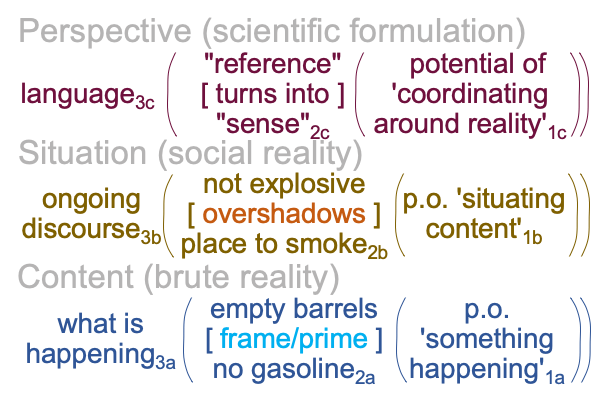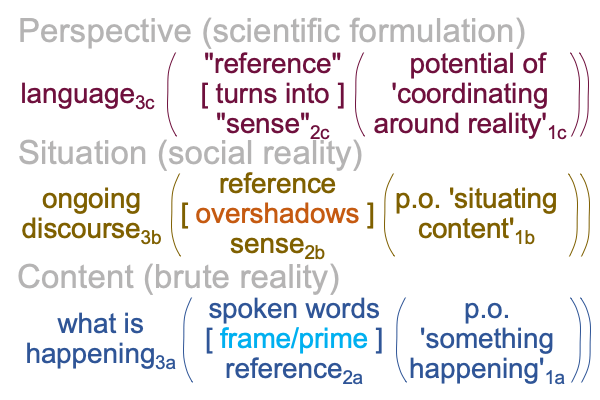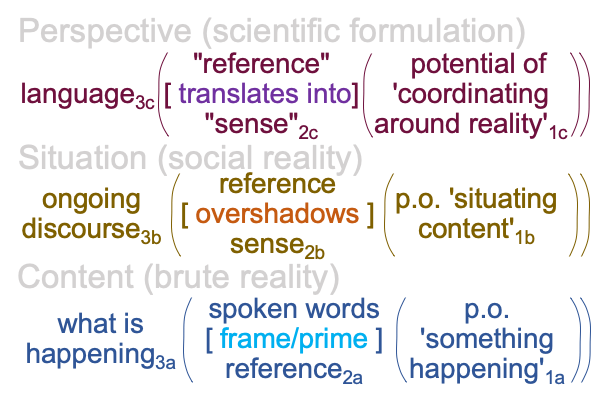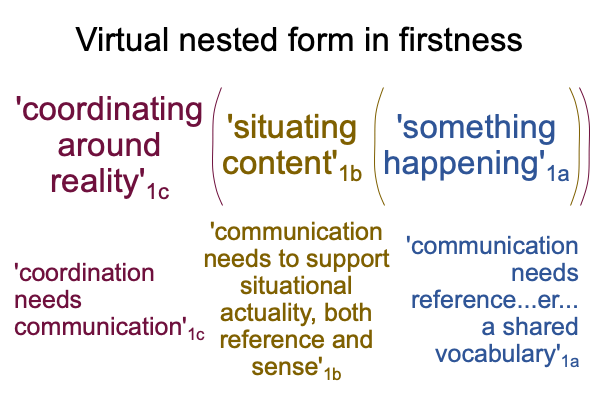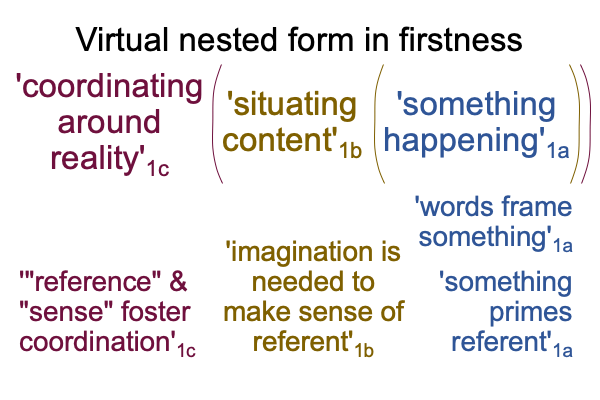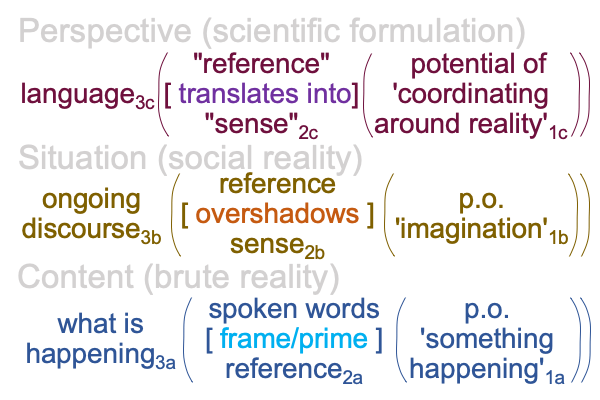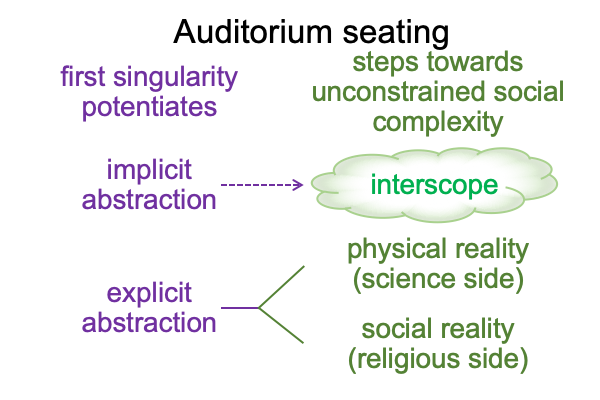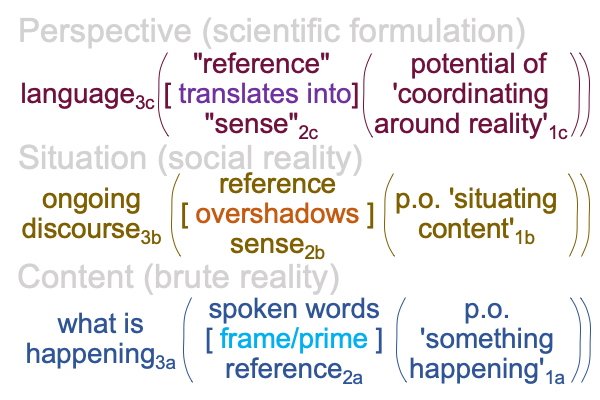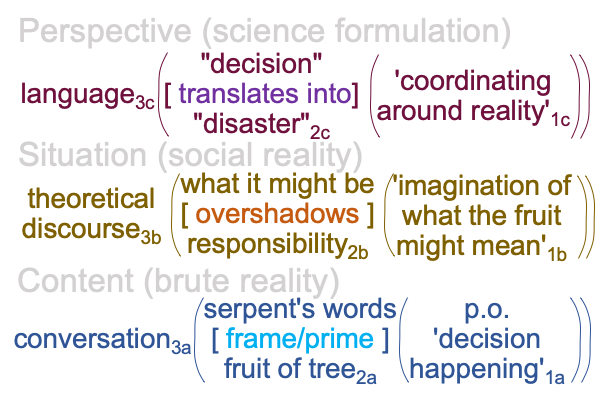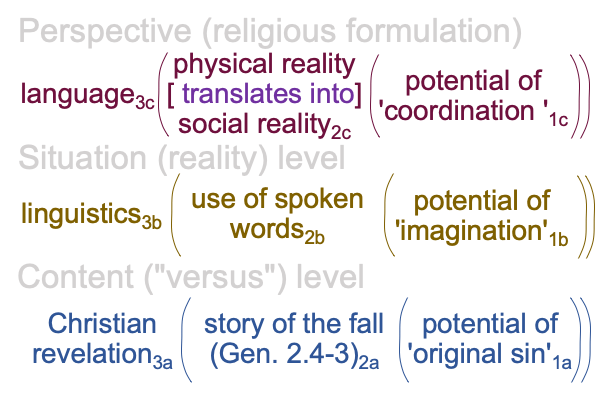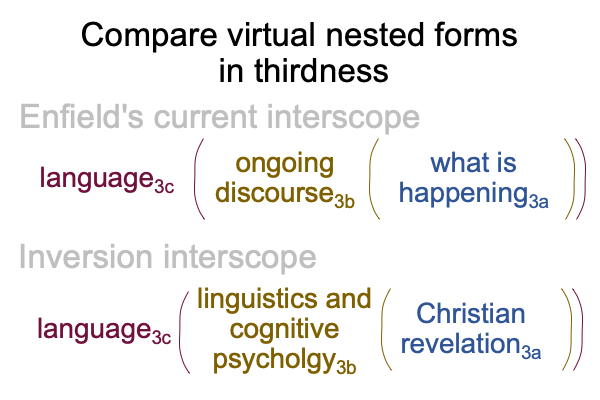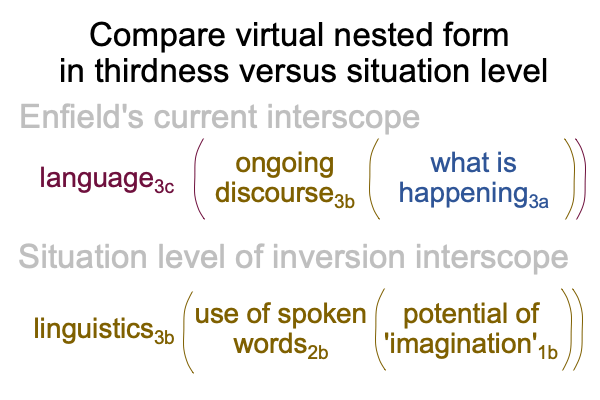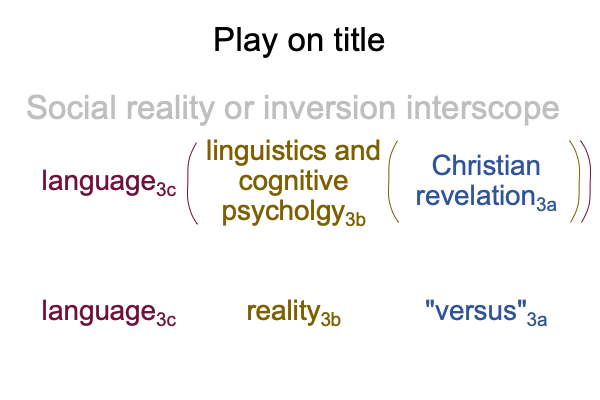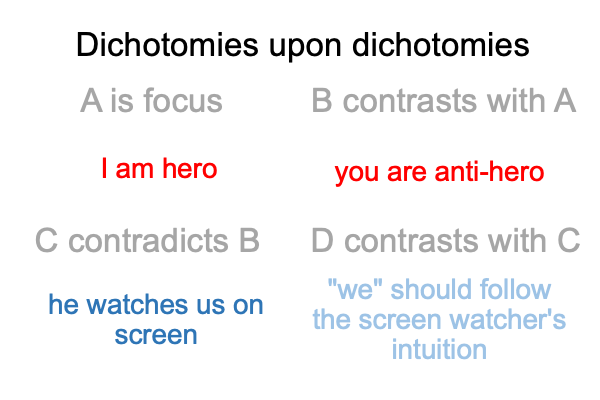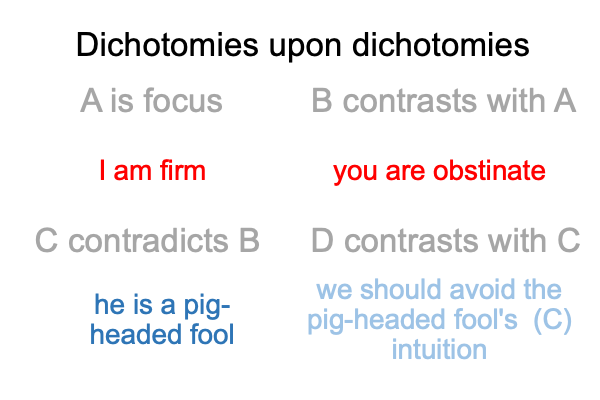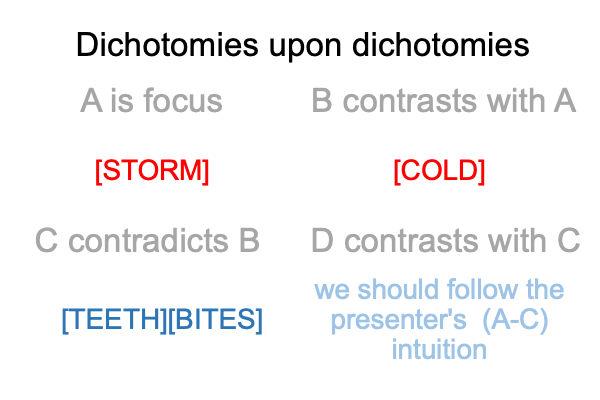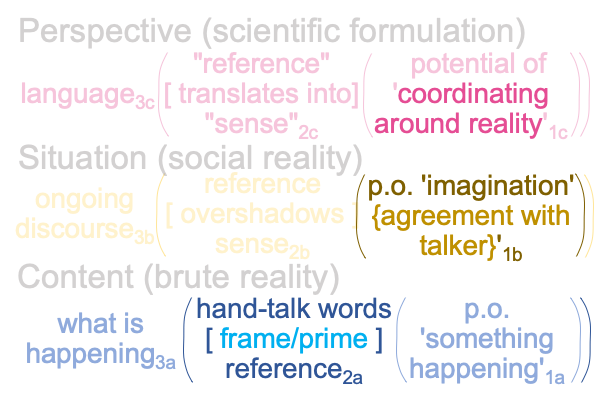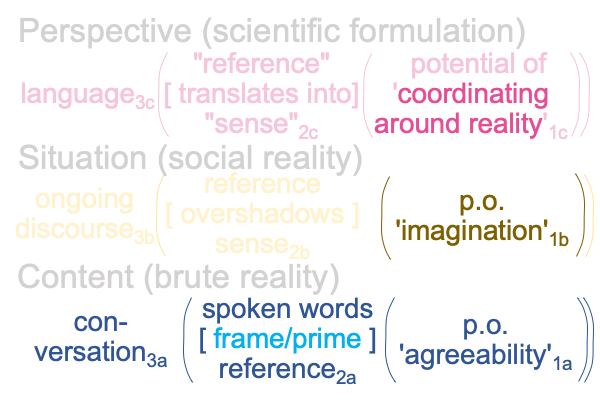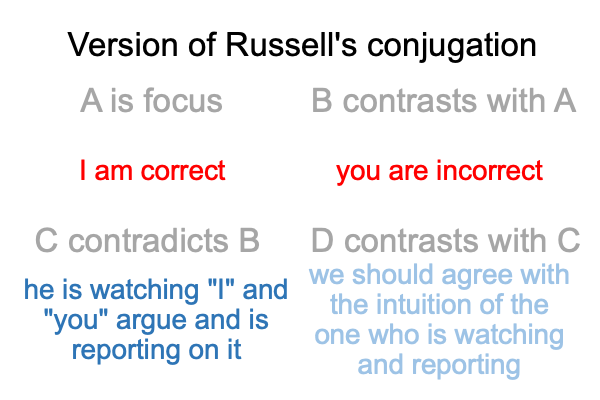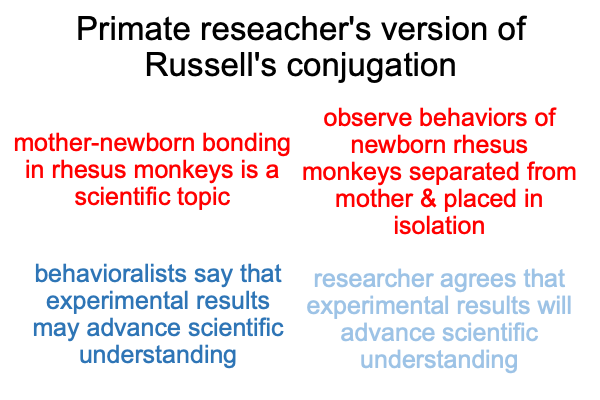Looking at N. J. Enfield’s Book (2022) “Language vs. Reality” (Part 10 of 23)
0920 After all, what is a frame?
A frame, like a door frame?
Yes, I suppose a door frame will do. This door frame is composed of immaterial elements, a normal context and potential, that prime the person engaging in the content-level hypomorphic sign-relation to pass through a portal called “reference”.
0921 Here is a picture.
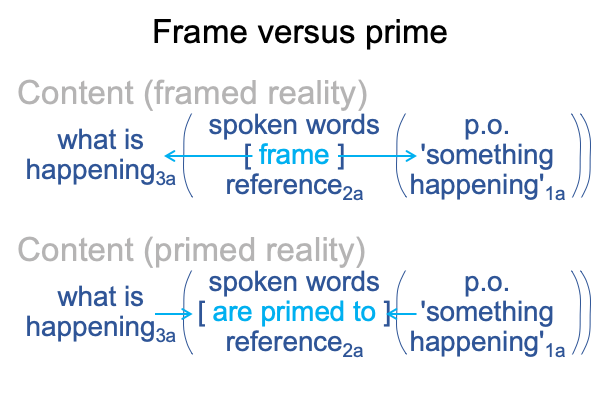
0922 In the single-level sign-relation that I associate to Enfield’s argument, spoken words2a (sign-vehicle, SV) stands for a reference2a (sign-object, SO) in regards to the normal context of what is happening3a operating on the potential of ‘something happening’1a (sign-interpretant, SO).
0923 Typically, the SV is on one level (say, content) and the SO is on the adjacent higher level (say, situation) along with the SI (also on situation level). In this standard formulation, which is consistent with the historical path leading to the identification of the sign as a triadic relation, sign-relations couple adjacent levels of an interscope. In short, the sign-relation is one way for content to alter a situation.
The above hypomorphic sign-relation may be seen, in a nascent expression, in Looking at Daniel Deacon’s Book (2017) “From Bacteria, to Bach and Back”, appearing in Razie Mah’s blog in December 2023. The meme is precisely what “frame” versus “prime” describes. An entire sign-relation squishes into a single level. In short, here is a sign-relation where style alters content.
0924 At this point in the text, Enfield digresses into a passage from Joseph Conrad’s 1907 novel, The Secret Agent, that does not exactly depict the following content.
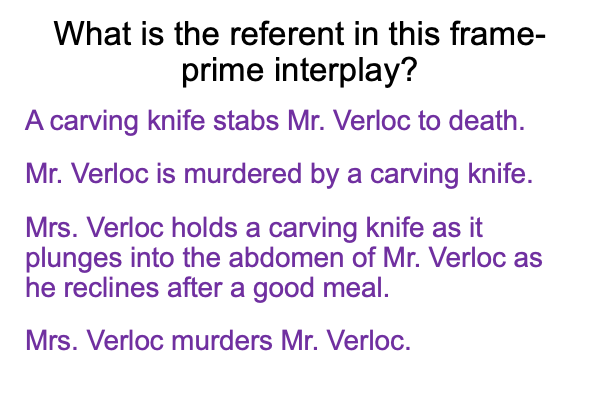
What do I mean by the word, “exact”?
Well, the above statements may be taken quite literally, leading people to conclude that Mrs. Verloc should be put on trial for murder.
0925 However, this is not how Conrad frames the passage.
Enfield revels in the way that Conrad uses the active voice and the passive voice in such a masterful way that people who read the passage wonder whether Mrs. Verloc is guilty of the crime.
0926 How so?
In Conrad’s incredibly artistic weave of active and passive voice, another figure enters the dance, so to speak. Stevie, the brother of Mrs. Verloc, is dead. And, I suspect, right before dinner, Mrs. Verloc finds out that Mr. Verloc is the reason why Stevie is dead. So, perhaps, during the entire meal, Mrs. Verloc anticipates Mr. Verloc to say something, anything, to confirm that the report of Mr. Verloc’s responsibility is not true. But, he does not.
After all, Mr. Verloc has no regrets and is not even thinking of “business”. But, Mrs. Verloc? She has regrets. Incredible regrets. However, she cannot leave her body and say, “Let me be free of this nightmare.” No, she loves her brother, Stevie, and is broken hearted to see him go. So, what happens next is right there in Conrad’s text, but it is so well scripted that Dr. Enfield does not even see it.
0927 Here is how Conrad frames the incident.
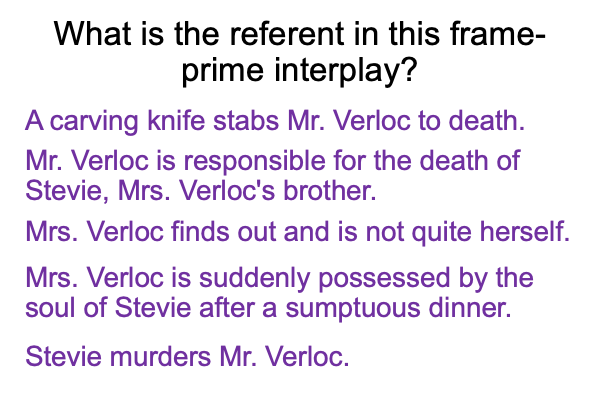
0928 No one in a jury would convict Mrs. Verloc.
She has nothing. No husband. No brother. All because of a conflict between the two people whom she loves. Mr. Verloc kills Stevie. Now, Stevie kills Mr. Verloc. What about Mrs. Verloc, both victim and conduit? She is as good as dead. Isn’t she?
That is what regular folk sense2b.
Her deed2a is overshadowed by her doom2b.
0929 But, this is not what Enfield senses2b.
In a profound testament to the cluelessness of the scientific mind, Enfield attributes the reason why people respond differently to the two versions, the just-the-facts version and Conrad’s version, to Joseph Conrad’s masterful use of linguistic framing.
Possession by disembodied souls is apparently a step too far.

